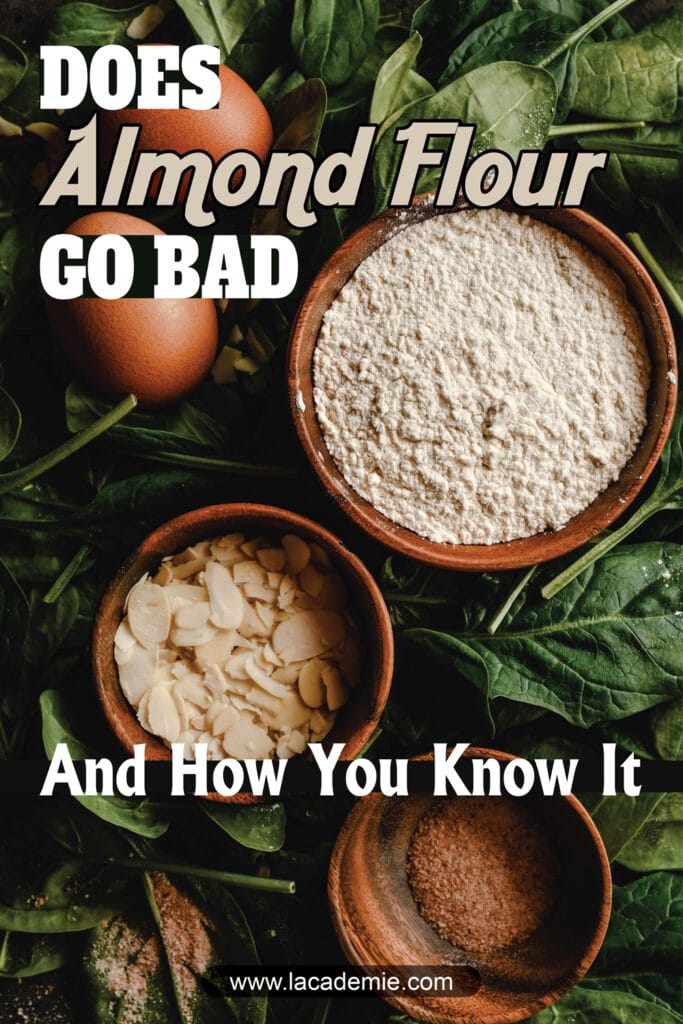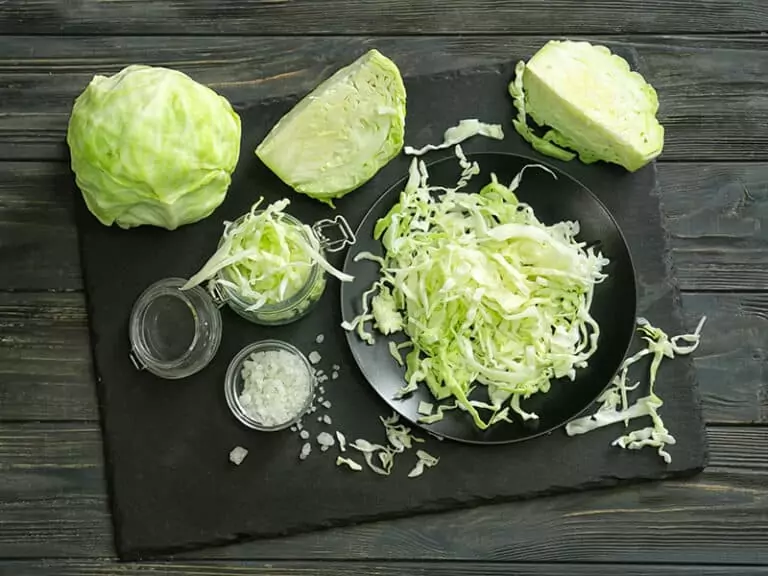Like many other kinds of food, almond flour does go bad at times. Even though you may assume that all kinds of flour have a long shelf life, the point of how long almond flour can last may still disturb you..
When you find a bag or a jar of almond flour, how can you know that it is usable or not? Some evidence can be noticed more easily but some are not.
My writing here is to help you recognize whether your almond flour goes bad or not. Furthermore, I will give you information about its shelf life and how you can store it.
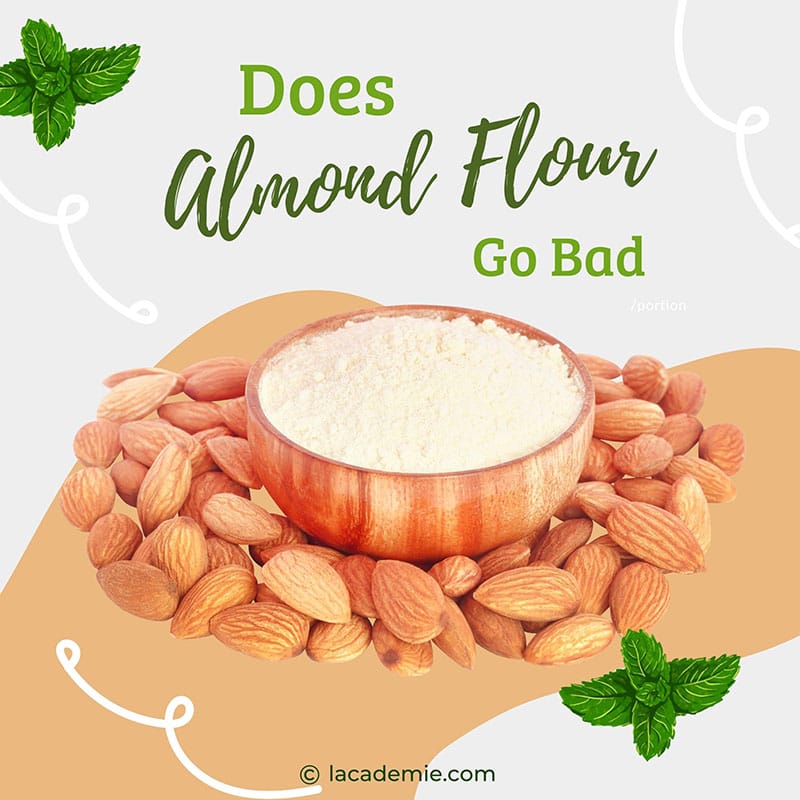
So, Almond Flour Does Go Bad, But Why?
Almond flour is used as a brilliant alternative for chickpea flour because they share quite many similarities. For example, they’re both great answers to the question of whether flour is vegan-friendly. When almond is ground into flour, it is also used to replace wheat flour and all-purpose flour.
Almond grains are famous for being wealthy in nutrients with low carbs and rich in fiber. If you’re wondering if almond flour is gluten-free, you don’t have to worry since it is (most of the time).
However, almonds contain a lot of plant-based fat. In the function of extracting almond oil, this fat is a healthy source. In the process of making flour, this oil fat is the reason why almond flour is spoiled quicker than other starchy flour.
Moreover, the rich source of vitamins, minerals, and protein in almond flour is an attractive environment for mold growth. The rich nutrient of almond flour is also a food source for pantry insects.
Shh! Dr.Berg will tell you about almond flour benefits in this video:
Don’t Use If Almond Flour Got These Signs
The rich in nutrients the almond flour contains, the easier it is for spoiling. If you notice some of the below evidence in your almond flour, you are being warned about stopping using it.
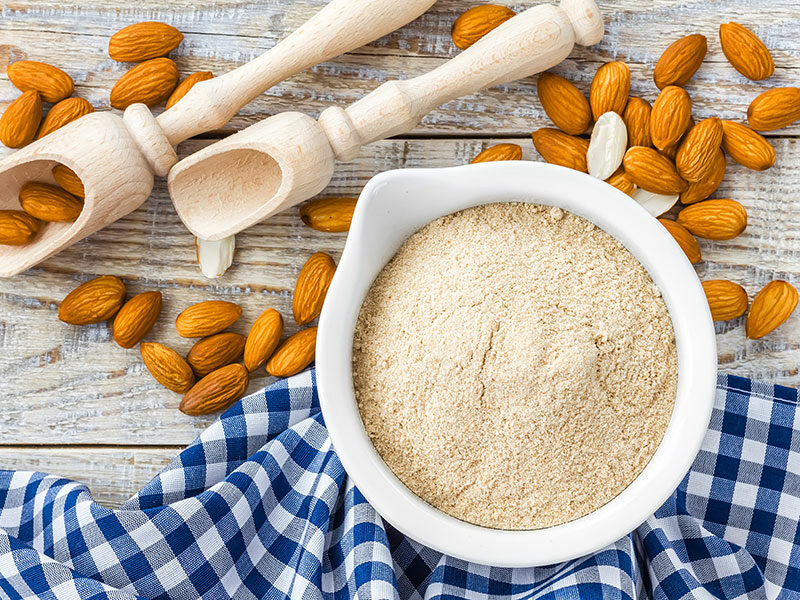
When your almond flour is going bad, there are some notices for you to recognise that it can not be used any more. If you see one or more spoiled features in the almond flour, you should consider discarding it.
- Off-aroma
- Discoloration
- Sticky clumps
- Mold
- Worm-infested.
Off-Aroma:
Have you ever taken a sniff at the fresh almond grains? The nutty-like smell of fresh almonds still remains even in the form of ground flour. The scent seems quite sweet and a bit earthy.
You can quickly recognize whether the flour is still good or not through its smell. If it is not fresh or has an aroma of old wood, you should throw it away.
Discoloration:
The blanched almonds used to make the almond flour have an ivory-white color. In contrast, the almond meal has the color of white-browning or faded yellowish from the shell intact. In other words, different almond types will result in slightly different colors in almond flour.
If you notice that their color has changed, it means the flour is not safe for you to consume anymore.
You can observe the color mutations of almond flour by eyes. If the flour loses its original color, it is spoiled.

Sticky Clumps:
When there are any liquid drops into the flour, it can get clumps.
Clumps are the situation that happens when your almond flour has contact with humidity or water.
Normally, high-quality almond flour is velvety and porous. The water liquid absorbed by the flour will stick them together to make a clump. In this case, mold is going to grow.
If you soonly notice it, you can re-strain the flour and dry it before the appearance of mold.
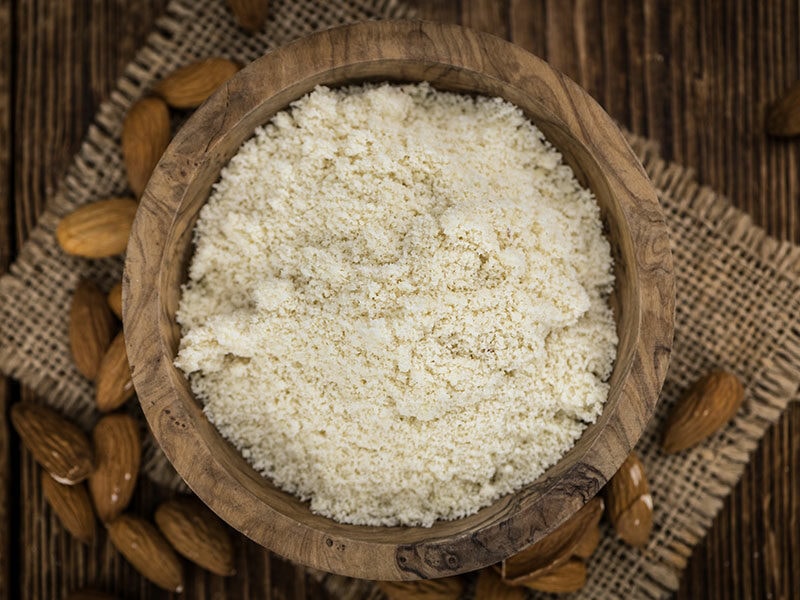
Mold:
Mold will grow in humid areas. The visible mold you see on the surface of flour is just fluffy outside. Even if you already discard the mold areas, mold roots still lay among the flour.
When you see the bluish-green mold grow on the almond flour, just throw it immediately without consideration.
Worm-Infested:
The high level of nutrients in almond flour is the most attractive to worms and insects. They come for food, and usually, they come with a whole army.
You can see them run among the flour, and in this time, I recommend that you should toss the almond flour bag or jar into the trash,
How Can I Store The Almond Flour?
Almond flour has a soft and porous texture with a rich nutrient. Like other kinds of flour, an unopened bag of almond flour is more accessible to store than an opened bag.
In Pantry:
You can totally store the almond flour in the pantry as long as it is unopened.
Some potential sources of damage such as heat, water, humidity, direct light will affect the flour quality.
You should keep the almond flour in a cool, dry, and dark place, and stay away from any damaged source to maintain the shelf life of flour.
Besides, some packages are sealable, but some are not. If the flour bag is the latter, you need to transfer the almond flour into an air-tight container, for example your unused cookie jars. About the former, you should close it properly after each use to prevent any unwanted damage.
In Refrigerator:
The most common instruction to preserve the almond flour, which is printed on its packaging, is “Keep best in the refrigerator”.
After you open the almond flour bag, the refrigerator is the best storing place to keep it. The cold temperature and dry environment in the fridge are ideal for the freshness of flour.
Furthermore, the closed refrigerator environment will keep all the insects or worms away from your almond flour bag.
To stay away from food cross-contamination, you should replace the flour container with a plastic bag with a glass jar before putting it into the fridge. This also helps you to follow the state of your almond flour.
In Freezer:
The most excellent storage is to let your almond flour stay in a freezer. If you keep your almond flour in the freezer, you can prolong its shelf life up to a year after the expiration date.
However, due to a portion of oil in the almond flour, you might see that the flour becomes a bit sticky and crumbly. This phenomenon is normal and will disappear when you thaw the flour during the frozen process.
For a safe frozen process, you need to use the freezer bag or some containers that are safe in the freezer to contain the almond flour. After you take it out of the freezer, the flour must be thawed before you use it for your recipe.
How Long The Almond Flour Lasts?
When you buy a bag of almond flour, the “best by” date is printed on the packaging. It is the recommended time to use from the sellers. The almond flour is at its peak quality within this time, but it does not mean that expired flour is unusable.
Expired flour is usable from 2 months to 2 years after its best-by-date up to the storage condition. Almond flour stored in the pantry has the shortest life, and the flour stored in the freezer can last the longest.
The table below shows the usable time of almond flour after its best-by-date, and the conditions belong:
What About The Homemade Almond Flour?
The homemade almond flour is usually made with 100% almond grains without any additives or preservatives.
Homemade flour is good to use, but it can not last as long as commercial almond flour.
You should store the homemade almond flour in an airtight container to stay away from pantry insects and humidity. A jar of homemade almond flour can last for 3 months in the pantry condition.
However, to best store the homemade almond flour, you have to keep it in the refrigerator or in the freezer.
The cold and dry conditions in those two places will slow the spoiling process and maintain the freshness of the flour, and it can last 6 months in the fridge and up to 12 months in the freezer.
Do you want to make some homemade almond flour?
What If You Consume The Spoiled Almond Flour?
My ultimate recommendation for you is do not continue to use the almond flour if it has any spoiled features. However, some of you cannot recognise them and unintentionally use the flour and suffer adverse effects. If you expect the nutty taste and good nutritions of almond flour, the spoiled one will end you up on the other side of those expectations.
When the almond flour goes bad, its taste will change, from a nutty-like taste to the sour taste of bitter, up to the spoiled situation of it. Consequently, it affects the final taste of the whole dish, especially in the recipes where almond flour is the main ingredient.
Eventually, if you eat the food without notice that it goes wrong, it can cause stomach irritation or food poisoning.
When you have any abnormal situation after consuming them, you then should go to see the doctor with the sample of your food.
FAQs
Besides the above information, there are some questions that you may also ask about almond flour.
Don’t Wait Until Your Almond Flour Goes Bad
Instead of storing the leftover almond flour and letting it go bad at times, you should arrange to use all the amount of almond flour within its best-by time for its best taste.
Furthermore, after this writing, if you notice any bad signal from the almond flour, you should not continue to use it for your safety.
All the information above is what I want to share with you about almond flour when it goes bad. I’m always free to receive any ideas of you guys or your sharing about almond flour via the comment section.
And when this writing is helpful to you, don’t hesitate to share it with your friends.
